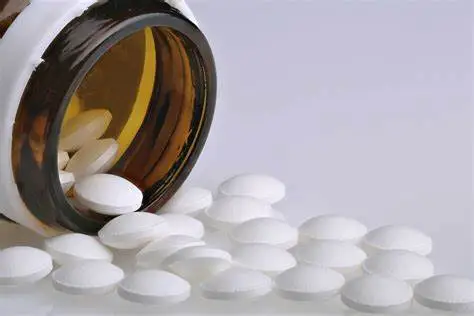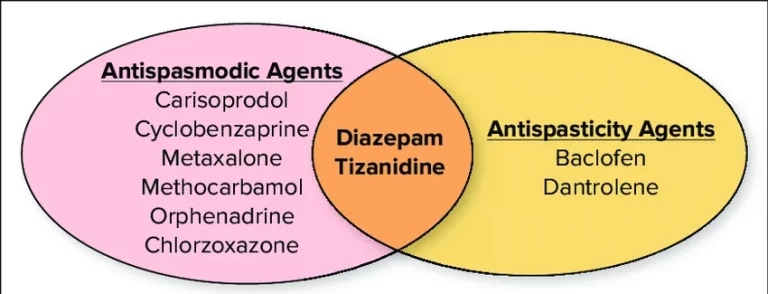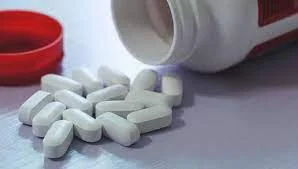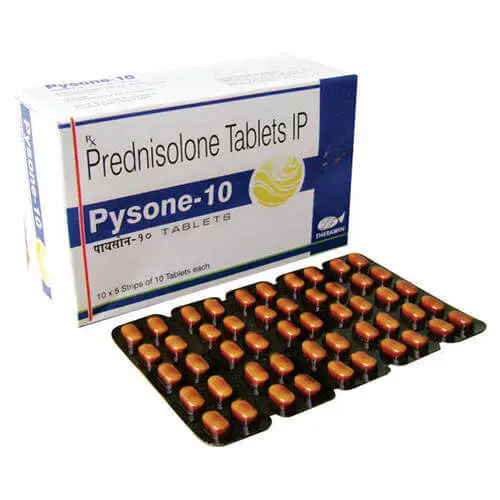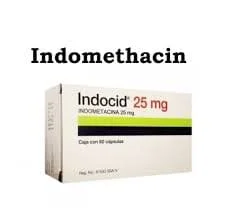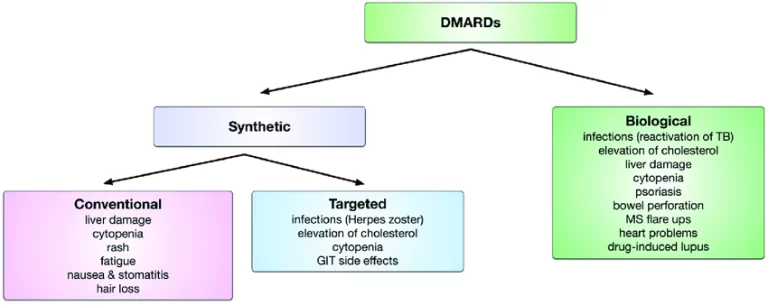Trihexyphenidyl (Oral): Uses, Side effects, Interaction and dosing
Table of Contents
Introduction:
Trihexyphenidyl is an antispasmodic drug used to treat various medical conditions, most notably Parkinson’s disease and certain movement disorders such as stiffness, tremors, spasms, and poor muscle control. It belongs to a class of drugs known as anticholinergics, which work by blocking the action of a neurotransmitter called acetylcholine in the brain and nervous system.
In the US, the FDA authorized it for the treatment of Parkinson’s in 2003.
Clinical and Pharmacokinetic data of trihexyphenidyl:
Generic Name – Trihexyphenidyl
Type – Small Molecule
Groups – Approved
Metabolism: Hepatic
Chemical Formula – C20H31NO
Elimination half-life: 3.3-4.1 hours
Route of elimination: Oral, as tablet or elixir
Brand names
Artane
Parkin
Trihexy
Hexymer
Trihexane
Synonyms
- Trihexifenidilo
- Trihexyphenidyl
- Trihexyphenidyl
- Trihexyphenidylum
Indication:
Trihexyphenidyl is prescribed to manage the symptoms of Parkinson’s disease, a neurodegenerative disorder characterized by tremors, muscle stiffness, and difficulty with movement. It can also be used to treat other conditions, such as certain types of tremors and dystonia, a movement disorder characterized by involuntary muscle contractions. Its indications include:
- Parkinson’s Disease: Trihexyphenidyl is commonly prescribed as an adjunct to other medications in the treatment of Parkinson’s disease. It helps alleviate some of the symptoms associated with this neurodegenerative disorder, such as tremors, muscle stiffness, and bradykinesia (slowness of movement).
- Extrapyramidal Symptoms (EPS): Trihexyphenidyl can be used to manage extrapyramidal symptoms caused by certain antipsychotic medications. These symptoms can include muscle stiffness, restlessness, and involuntary movements, which are common side effects of antipsychotic drugs.
- Dystonia: Trihexyphenidyl may be prescribed to treat dystonia, a neurological movement disorder characterized by sustained muscle contractions that lead to abnormal postures or repetitive movements.
- Drug-Induced Parkinsonism: In cases where medication or drug use leads to symptoms resembling Parkinson’s disease, trihexyphenidyl can be used to mitigate these symptoms.
- Tremors: It can be used to alleviate tremors associated with various medical conditions, including essential tremors.
It’s important to note that trihexyphenidyl is primarily used as an adjunctive therapy alongside other medications for these conditions. The choice to use trihexyphenidyl, the dosage, and the duration of treatment should be determined by a healthcare provider based on the individual patient’s needs and medical history. This medication should only be used under medical supervision due to potential side effects and interactions with other drugs.
Mechanism of action:
The mechanism of action of Trihexyphenidyl involves its activity as an anticholinergic medication. Trihexyphenidyl acts to block the effects of acetylcholine, a neurotransmitter in the brain and nervous system. Here’s a more detailed explanation of its mechanism of action:
Cholinergic Activity: In the brain and nervous system, acetylcholine is a neurotransmitter that plays a vital role in regulating various functions, including muscle control, movement, and the balance of other neurotransmitters.
Imbalance in Neurotransmitters: In conditions like Parkinson’s disease, there is an imbalance between two important neurotransmitters: dopamine and acetylcholine. There is a decrease in dopamine, which is essential for smooth and coordinated muscle movements, and an increase in acetylcholine, which can lead to muscle rigidity, tremors, and other motor symptoms.
Anticholinergic Action: Trihexyphenidyl works as an anticholinergic by blocking the action of acetylcholine in the brain and peripheral nervous system. It binds to muscarinic acetylcholine receptors, preventing acetylcholine from binding to these receptors and exerting its effects.
Rebalancing Neurotransmitters: By blocking the effects of acetylcholine, Trihexyphenidyl helps restore the balance between dopamine and acetylcholine. This rebalancing of neurotransmitters can lead to a reduction in the motor symptoms associated with conditions like Parkinson’s disease and certain movement disorders.
It’s important to note that Trihexyphenidyl is not a disease-modifying treatment but rather a symptomatic treatment. It helps alleviate the symptoms of conditions like Parkinson’s disease and other movement disorders, but it does not slow the progression of the underlying disease.
Pharmacokinetics:
Absorption: Trihexyphenidyl is well absorbed from the gastrointestinal tract when taken orally. It is rapidly absorbed, with peak plasma concentrations typically reached within 1 to 2 hours after oral administration.
Distribution: Trihexyphenidyl is widely distributed throughout the body. It can cross the blood-brain barrier, allowing it to exert its effects on the central nervous system, which is important for its action in treating movement disorders like Parkinson’s disease.
Metabolism: Trihexyphenidyl undergoes metabolism in the liver. The primary metabolic pathway involves hydroxylation of the molecule to form inactive metabolites. The cytochrome P450 enzyme system, particularly CYP2D6, plays a role in the metabolism of Trihexyphenidyl.
Elimination: Trihexyphenidyl and its metabolites are primarily excreted in the urine. The elimination half-life of Trihexyphenidyl is approximately 3 to 8 hours, meaning that it takes this amount of time for half of the drug to be cleared from the body.
Administration:
There are oral pills containing 2 mg and 5 mg of trihexyphenidyl as well as a 2 mg/5 mL solution. Trihexyphenidyl HCl dosages are empirically established and vary depending on the patient. Particularly for persons older than 60 years of age, clinicians should prescribe a low starting dose and gradually increase it. Depending on the patient, the oral medication may be taken before or after meals. Patients who have excessive xerostomia (caused by trihexyphenidyl’s anticholinergic effects) may take the medication before meals, while those who feel queasy or have a tendency to excessive salivation may take it after meals.
In three separate dosages per day with food, trihexyphenidyl is more easily tolerated. The four daily dosages (one with each meal and one at bedtime) for higher doses, such as those exceeding 10 mg, could be divided.
Trihexyphenidyl should not be abruptly stopped in individuals receiving treatment for parkinsonism symptoms because this could lead to an acute worsening of current symptoms. In addition, patients who abruptly stopped receiving medication have been reported to develop neuroleptic malignant syndrome.
Use in conjunction with levodopa:
When using both of these medications simultaneously, the recommended doses of trihexyphenidyl and levodopa may need to be reduced. Depending on how well symptoms are controlled and any potential adverse effects, dosage adjustments must be performed with care. A typical dosage range of 3 to 6 mg per day, divided into two doses, is sufficient for symptom treatment with few side effects.
Dose in specific patient population:
Pregnancy Considerations: Trihexyphenidyl passes the placenta and is categorized as a former FDA class C pregnancy risk factor. There have been reports of miscarriage and molar pregnancy. Major congenital impairments were not increased in a sample of 2323 patients on anticholinergic medications. However, there have been a few reports of miscarriage and molar pregnancy.
Breastfeeding Considerations: Prolonged dose of trihexyphenidyl is unlikely to prevent nursing, prolonged use of the drug may decrease lactation. Watch out for indications of diminished lactation when on a long-term regimen.
The functions of trihexyphenidyl:
Trihexyphenidyl is primarily used for its functions in managing various medical conditions, particularly those involving movement disorders. Its main functions include:
Parkinson’s Disease: Trihexyphenidyl is often prescribed as part of the treatment regimen for Parkinson’s disease. It helps alleviate some of the motor symptoms associated with this neurodegenerative disorder, such as tremors, muscle stiffness (rigidity), and slowness of movement (bradykinesia). By blocking the action of acetylcholine in the brain and nervous system, Trihexyphenidyl helps restore the balance between neurotransmitters like dopamine and acetylcholine, which can improve motor function in Parkinson’s patients.
Management of Drug-Induced Parkinsonism: In cases where medication or drug use leads to symptoms resembling Parkinson’s disease (drug-induced parkinsonism), Trihexyphenidyl can be used to mitigate these symptoms, particularly if discontinuing the causative medication is not feasible or advisable.
Treatment of Dystonia: Trihexyphenidyl may also be prescribed for the treatment of dystonia, a neurological movement disorder characterized by sustained muscle contractions that lead to abnormal postures or repetitive movements. By reducing muscle contractions through its anticholinergic action, Trihexyphenidyl can provide relief from dystonic symptoms.
Management of Extrapyramidal Symptoms (EPS): Trihexyphenidyl can be used to manage extrapyramidal symptoms that are side effects of certain antipsychotic medications. These symptoms may include muscle stiffness, restlessness, and involuntary movements, which can occur as adverse reactions to antipsychotics. Trihexyphenidyl’s anticholinergic properties can help alleviate these side effects and improve the tolerability of antipsychotic treatment.
It’s important to emphasize that Trihexyphenidyl does not cure the underlying conditions it is used to treat. Instead, it provides symptomatic relief by addressing specific motor and movement-related symptoms. The choice to use Trihexyphenidyl, the dosage, and the duration of treatment should be determined by a healthcare provider based on the individual patient’s needs and medical history.
How long does Trihexyphenidyl take to work?
When taken orally, the medication is readily absorbed from the gastrointestinal tract and begins to work 60 minutes later, peaking 2 to 3 hours later. However, it can vary from person to person and depends on several factors such as the individual’s medical condition, age, symptoms, and dosage.
Extrapyramidal Symptoms (EPS): For individuals experiencing extrapyramidal symptoms (EPS) as a side effect of antipsychotic medications, Trihexyphenidyl can begin to alleviate these symptoms relatively quickly, often within hours to a few days. This can lead to improved tolerance of antipsychotic treatment.
Dystonia: In the treatment of dystonia, symptom relief with Trihexyphenidyl can vary widely. Some individuals may experience relief within days, while others may require several weeks or even months to achieve maximum benefit. The time it takes to see improvement can depend on the type and severity of dystonia.
What are the adverse effects of the Trihexyphenidyl drug?
Trihexyphenidyl, like many medications, can cause adverse effects. These side effects can vary in severity and frequency among individuals. It’s important to be aware of potential side effects and discuss them with your Doctor. Adverse effects of trihexyphenidyl according to system organ classification(SOC) are listed below:
- Ocular Effects: Both patients with and without photophobia may experience mydriasis. Because of the angle closure caused by this disorder, which raises intraocular pressure, it may cause impaired vision or even narrow-angle glaucoma.
- CNS Effects: Headache, vertigo, sleepiness, and vertigo are often reported side effects. Patients receiving greater doses experienced agitation, uneasiness, disorientation, and anxiety.
- Drowsiness or Dizziness: Trihexyphenidyl can lead to drowsiness or dizziness, which may increase the risk of falls, particularly in older adults. Caution is advised when operating machinery or engaging in activities that require alertness.
- Nervousness or Agitation: Some people may experience increased nervousness or agitation while taking Trihexyphenidyl.
- Hallucinations: In some cases, Trihexyphenidyl can induce hallucinations or other changes in perception, particularly at higher doses. If you experience hallucinations, contact your healthcare provider immediately.
- Confusion: Trihexyphenidyl can sometimes cause confusion, especially in elderly individuals or at higher doses. If you or a loved one experiences confusion while taking this medication, consult a healthcare provider.
- Peripheral Adverse Effects: As with other anticholinergics, patients must be monitored for long-term use due to impaired sweating, dry mouth, stomach pain, nausea, urine retention, and constipation. Some patients also develop tachycardia. Even though allergic reactions are uncommon, trihexyphenidyl usage may result in one.
- Dry Mouth: Dry mouth (xerostomia) is one of the most common side effects of Trihexyphenidyl. It can lead to discomfort and difficulty swallowing, speaking, or chewing. Staying hydrated and eating sugar-free candies may be beneficial.
- Constipation: Trihexyphenidyl may slow down the movement of the digestive tract, leading to constipation. A diet high in fiber and adequate fluid intake can help alleviate this side effect.
- Allergic Reactions: Individuals might experience symptoms such as rash, itching, swelling, severe dizziness, or difficulty breathing.
- Other Side Effects: Trihexyphenidyl may also cause other less common side effects, including changes in taste, difficulty sleeping, and more. During treatment, tolerance may arise, necessitating dose changes.
It’s necessary to communicate any adverse effects or concerns with your physician. They can help manage side effects, adjust your medication if necessary, or explore alternative treatments if Trihexyphenidyl is causing intolerable adverse effects. Do not stop or change your medication regimen without consulting your healthcare provider, as abrupt discontinuation may lead to withdrawal symptoms or worsening of your condition.
Drug-Drug Interaction:
- Anticholinergic Medications: Combining Trihexyphenidyl with other anticholinergic drugs, such as some antihistamines, tricyclic antidepressants, and certain medications for overactive bladder, can increase the risk of anticholinergic side effects like dry mouth, constipation, and blurred vision.
- Levodopa: Trihexyphenidyl is often used in combination with levodopa to treat Parkinson’s disease. The two medications can have additive effects on symptom relief. However, when combined, there may be an increased risk of side effects like confusion, hallucinations, and dizziness.
- Amantadine: Combining Trihexyphenidyl with amantadine, another medication used to treat Parkinson’s disease, can increase the risk of side effects, including dry mouth, hallucinations, and dizziness.
- Antipsychotic Medications: Trihexyphenidyl may be prescribed to manage extrapyramidal symptoms (EPS) caused by antipsychotic medications. However, combining Trihexyphenidyl with antipsychotics may increase the risk of anticholinergic side effects and exacerbate certain EPS.
- Monoamine Oxidase Inhibitors (MAOIs): The combination of Trihexyphenidyl and MAOIs can lead to a hypertensive crisis, a severe increase in blood pressure, and other potentially serious reactions. MAOIs are used to treat depression and certain other psychiatric conditions.
- Antidepressants: Some antidepressants, such as selective serotonin reuptake inhibitors (SSRIs) and tricyclic antidepressants (TCAs), may interact with Trihexyphenidyl, increasing the risk of anticholinergic side effects or other adverse reactions.
- Antacids and Certain Gastrointestinal Medications: Antacids and medications used to treat gastrointestinal issues can interfere with the absorption of Trihexyphenidyl, potentially reducing its effectiveness.
- Alcohol and Sedatives: Combining alcohol and sedatives with Trihexyphenidyl can increase the sedative effects of the medication, leading to excessive drowsiness and impaired coordination.
Contraindication:
Trihexyphenidyl should not be taken by people who are allergic to it or any of the other components used in medicine formulations. Additionally, it should not be used by people who have narrow-angle glaucoma since it has anticholinergic activity that could lead to mydriasis, which would further reduce the angle of the lens, raise IOP, and exacerbate the condition.
Monitoring:
Patients with liver, kidney, or heart diseases are not strictly contraindicated from taking trihexyphenidyl, but it is advised that these patients be constantly monitored while taking the medication. Additionally, during treatment, patients with hypertension should have their blood pressure checked.
Trihexyphenidyl has qualities comparable to atropine, therefore some patients may need to use it indefinitely. To prevent allergic and other unfavorable reactions, long-term monitoring should be used. Trihexyphenidyl has parasympathetic activity, therefore it should be used with caution and under close observation in patients with obstructive gastrointestinal or genitourinary disorders, glaucoma, and elderly males with prostatic hypertrophy. Patients in the elderly, especially those over 60, frequently have an increased sensitivity to these medications and necessitate stringent dosage control.
Toxicity:
Trihexyphenidyl has a history of abuse, just as certain other antiparkinsonian drugs. Patients with persistent schizophrenia and those who also abuse other substances have been reported to misuse the drug more frequently than the latter group. A worrying tendency of trihexyphenidyl usage has been revealed by a recent systematic research released in 2022. The anticholinergic medication that is most commonly abused is benzhexol/trihexyphenidyl (THP). Benzodiazepines, alcohol, cannabis, amphetamines, opioids, LSD, PCP, nicotine, and cocaine are among the substances it commonly mixes with.
Trihexyphenidyl toxicity is similar to atropine intoxication (antimuscarinic effects) and is accompanied by symptoms such as xerostomia, anhidrosis, mydriasis, nausea/vomiting, tachycardia, hyperpyrexia, reduced bowel and bladder movements, rash, and heat. Confusion, restlessness, agitation, shakiness, lack of coordination, psychotic and paranoid behaviors, delirium, and hallucinations are some of the CNS symptoms that are seen with overdose. There have been cases of severe overdoses when CNS depression resulted in comas, failure of the respiratory and circulatory systems, and death. If the overdose is not treated right away, it could be lethal, particularly in younger children.
Establishing appropriate airway patency right away is the best course of action for managing overdoses. In order to counteract the antimuscarinic effects, the particular antagonist physostigmine works both centrally and peripherally. Using diazepam to control convulsions and hyperactivity is necessary, but it should be done carefully because it increases the risk of CNS depression. There should be appropriate treatment for acidosis and hypoxia. Drugs that cause an arrhythmia shouldn’t be used to treat it. Carbage can be used to treat atonic bowel and bladder.
What should I know regarding the storage and disposal of this trihexyphenidyl drug?
Storage:
Store in a Cool, Dry Place: Trihexyphenidyl should be stored in a cool, dry place away from moisture, heat, and direct sunlight. Avoid storing it in certain places, where humidity and temperature changes can occur.
Keep Out of Reach of Children: Store Trihexyphenidyl in a location that is inaccessible to children and pets. Medicines should always be kept in child-proof containers.
Secure the Lid: Ensure that the medication container is tightly sealed to prevent exposure to air and moisture, which can degrade the medication.
Verify the expiration date. Keep track of the medication’s expiration date on the container. Trihexyphenidyl should not be used if it has expired since its potency may have decreased.
Disposal:
Follow Local Regulations: The disposal of medications can vary depending on local regulations. Check with your local pharmacy or healthcare facility for guidance on how to dispose of unused or expired medications in your area.
Do Not Flush Down the Toilet or Drain: Do not dispose of Trihexyphenidyl by flushing it down the toilet or pouring it down the sink. This can contribute to water pollution and harm the environment.
Drug Take-Back Programs: Many communities have drug take-back programs or events where you can safely dispose of unused or expired medications. These programs ensure proper disposal and prevent medications from falling into the wrong hands.
Mix with Undesirable Substance (Optional): If there are no drug take-back options available, you can mix the unused medication with an undesirable substance, such as coffee grounds or kitty litter, in a sealable bag or container. This makes the medication less appealing and safe for disposal in household trash.
Remove Personal Information: Before disposing of medication packaging, remove or black out any personal information to protect your privacy.
Ask Your Pharmacist: Your local pharmacist can often provide guidance on the safe disposal of medications and may have information about take-back programs in your area.
It’s essential to handle medication disposal responsibly to prevent accidental ingestion by children or pets and to protect the environment. If you have any questions or concerns about the storage or disposal of Trihexyphenidyl or any other medication, consult with your healthcare provider or pharmacist for guidance specific to your situation and location.
In what circumstances should I check with my doctor before taking trihexyphenidyl?
It’s important to consult with your doctor or healthcare provider, as there are various circumstances and medical conditions that may require special consideration or caution when using this medication. Here are some situations in which you should check with your doctor before taking trihexyphenidyl:
Allergies or Sensitivities: Inform your doctor if you have a history of allergies or sensitivities to trihexyphenidyl or any other medications, including other anticholinergic drugs. An allergic reaction that is severe requires immediate medical attention.
Existing Medical Conditions: Your doctor should be aware of any preexisting medical conditions you have, especially:
- Glucoma: Trihexyphenidyl may worsen glaucoma, a condition characterized by increased pressure in the eye. It’s important to discuss this condition with your doctor, as they may need to monitor your eye health closely or consider alternative treatments.
- Enlarged Prostate (Benign Prostatic Hyperplasia): Trihexyphenidyl may worsen urinary retention associated with an enlarged prostate. Your doctor will need to weigh the risks and benefits and may adjust your treatment accordingly.
- Gastrointestinal Disorders: If you have a history of gastrointestinal disorders such as ulcerative colitis or constipation, your doctor should be informed, as trihexyphenidyl can exacerbate these conditions.
- Other Medications: Tell your doctor about all medications you are currently taking, including prescription drugs, over-the-counter medications, supplements, and herbal remedies. Trihexyphenidyl can interact with other drugs, potentially leading to adverse effects or reduced effectiveness.
Pregnancy and Breastfeeding: If you are pregnant, planning to become pregnant, or breastfeeding, discuss the use of trihexyphenidyl with your doctor. The safety of this medication during pregnancy and breastfeeding has not been well studied, and your doctor can help you weigh the potential risks and benefits.
Medical History: Provide your doctor with a detailed medical history, including any past surgeries or hospitalizations. This information can help your doctor make an informed decision about prescribing trihexyphenidyl.
Side Effects and Tolerance: Some individuals may experience side effects such as drowsiness, dizziness, or blurred vision while taking trihexyphenidyl. Discuss any side effects with your doctor, as they can help you manage them or adjust your treatment plan if necessary.
Always follow your doctor’s recommendations and dosing instructions carefully when taking trihexyphenidyl or any medication. Your healthcare provider will assess your individual circumstances and medical history to determine the most appropriate course of treatment and monitor your progress during therapy.
Can trihexyphenidyl drug cause allergic reactions?
Yes, trihexyphenidyl can potentially cause allergic reactions in some individuals. Allergic reactions to medications like trihexyphenidyl can vary in severity and may include symptoms such as:
- Rash or Hives: Some people may develop a skin rash or hives after taking trihexyphenidyl. These can range from mild to severe and may be accompanied by itching.
- Swelling: Swelling can result from allergic reactions, especially when it affects the face, lips, tongue, or neck. This can potentially lead to difficulty in breathing or swallowing, which is a medical emergency.
- Difficulty Breathing: Severe allergic reactions, known as anaphylaxis, can cause difficulty breathing, wheezing, or shortness of breath. Anaphylaxis is a condition that requires immediate treatment.
- Other Symptoms: Allergic reactions can also include symptoms such as rapid heart rate, dizziness, nausea, vomiting, and confusion.
It’s essential to seek immediate medical attention if you suspect you are experiencing an allergic reaction to trihexyphenidyl or any medication. Allergic reactions can be severe and potentially life-threatening, so it’s crucial to receive prompt medical care.
If you have a known allergy to trihexyphenidyl or any of its ingredients, you should not use this medication, and you should inform your healthcare provider of your allergy to avoid any potential exposure to the drug.
Additionally, if you experience any unusual or severe side effects while taking trihexyphenidyl, you should contact your doctor or seek medical attention. Your healthcare provider can evaluate your symptoms and determine the appropriate course of action, which may include discontinuing the medication or switching to an alternative treatment.
What should I do if I forget a dose of the trihexyphenidyl drug?
Take the Missed Dose as Soon as You Remember: Take the dose as soon as you remember if you realize you missed one. If your next dose is approaching, skip the missed one and carry on with your regular dosing regimen. Never take two doses to reunite for a missing one.
Set a Reminder: To help avoid missing doses in the future, consider setting an alarm, using a medication reminder app, or establishing a daily routine for taking your medication. This can help ensure you take it as prescribed.
It’s important to maintain a consistent dosing schedule with trihexyphenidyl, especially if it is prescribed to manage symptoms of conditions like Parkinson’s disease or certain movement disorders. Missing doses can result in inadequate symptom control.
If you accidentally take more than the prescribed dose of trihexyphenidyl, contact your healthcare provider or seek medical attention immediately. Overdosing on this medication can lead to side effects such as confusion, hallucinations, fever, fast or irregular heartbeat, and other serious symptoms.
Always follow your healthcare provider’s instructions for taking trihexyphenidyl and do not make any changes to your dosage or schedule without their guidance. If you have any questions or concerns about your medication, don’t hesitate to reach out to your healthcare provider or pharmacist for clarification.
Enhancing healthcare team outcomes:
Trihexyphenidyl is typically prescribed by doctors for particular conditions such as drug-induced parkinsonism. As was previously said, movement disorder experts, psychiatrists, and neurologists are crucial in managing patients who need trihexyphenidyl therapy. Medication reconciliation should be done by pharmacists, who should also alert clinicians to any potential interactions. Over time, nursing should keep an eye out for symptoms of compliance, usage, and clinical advancement. Trihexyphenidyl is mostly prescribed by clinicians (MD, DO, PA, NP), who limit its use to serious conditions only. Prescription drug monitoring programs (PDMP) can be very beneficial when trihexyphenidyl usage rises.
According to a recent comprehensive study, trihexyphenidyl usage while taking other drugs is frequent; medical toxicologists should be consulted. Trihexyphenidyl may be hazardous, thus its administration and management necessitate a multidisciplinary healthcare team, with the physician, nurse, and pharmacist keeping an eye out for any issues and alerting the team of any worries. With less chance of drug abuse or unfavorable consequences, this interprofessional strategy will produce better results. According to a related study, providing patients with direct care while under the supervision of a medical toxicologist can significantly shorten hospital stays, cut expenditures, and lower mortality rates for people who have overdosed on drugs and are hospitalized.
Precautions to take when using trihexyphenidyl drug:
Follow Medical Advice: Take trihexyphenidyl exactly as prescribed by your healthcare provider. Do not change the dosage or frequency of use without asking to your doctor.
Regular Check-Ups: Attend each and every one of your doctor’s scheduled follow-up appointments. Your doctor may need to adjust your dosage or treatment plan based on your response to the medication.
Stay Hydrated: Trihexyphenidyl can cause dry mouth. To alleviate this side effect, drink plenty of water throughout the day. Sugarless gum or candies may also help increase saliva production.
Be Cautious with Activities: Trihexyphenidyl may cause dizziness, drowsiness, or blurred vision, especially when starting the medication. Use caution when engaging in activities that require alertness, such as driving or operating heavy machinery. Avoid these activities until you are certain how the medication affects you.
Avoid Alcohol: Alcohol can intensify the sedative effects of trihexyphenidyl and increase the risk of dizziness and impaired coordination. Try to avoid alcohol while you are on medication.
Temperature Sensitivity: Trihexyphenidyl can make you more sensitive to temperature changes. Be cautious in extreme hot or cold weather conditions to avoid overheating or chilling.
Report Side Effects: If you experience any unusual or severe side effects, such as confusion, hallucinations, rapid heartbeat, difficulty urinating, or signs of an allergic reaction (e.g., rash, swelling, difficulty breathing), contact your healthcare provider immediately.
Medical Conditions: Inform your doctor of any preexisting medical conditions, especially:
Glaucoma: Trihexyphenidyl may worsen this condition.
Enlarged Prostate (Benign Prostatic Hyperplasia): The medication can exacerbate urinary retention.
Gastrointestinal Disorders: If you have a history of gastrointestinal disorders, discuss this with your doctor, as trihexyphenidyl can affect the digestive system.
Other Medications: Tell your doctor about all of the prescription drugs, over-the-counter remedies, and herbal items you use. Trihexyphenidyl may interact with certain drugs, so your doctor can help you manage potential interactions.
Pregnancy and Breastfeeding: If you are pregnant, planning to become pregnant, or breastfeeding, discuss the use of trihexyphenidyl with your doctor. Carefully weighing the risks and advantages is necessary.
Storage: Store trihexyphenidyl at room temperature, away from moisture and direct sunlight.
Adhering to these precautions can help ensure the safe and effective use of trihexyphenidyl while minimizing potential risks and side effects. Always consult your healthcare provider if you have any questions or concerns about your medication or its use.
Conclusion:
In summary, trihexyphenidyl is a medication used to treat the symptoms of Parkinson’s disease and certain movement disorders. It can help alleviate muscle stiffness, tremors, and other motor symptoms. To use trihexyphenidyl safely and effectively, follow your doctor’s instructions, be mindful of potential side effects, and communicate any concerns with your healthcare provider.
FAQs
The mean elimination half-life of trihexyphenidyl is 3.2 ± 0.3 hours. Mydriasis, dry mucous membranes, a red face, atonic states of the bowels and bladder, and, in large doses, hyperthermia are all signs of overdose.
Patients should be advised to refrain from consuming alcohol or using other CNS depressants while using ARTANE (trihexyphenidyl) due to the medication’s heightened sedative effects.
A combination drug called risperidone + trihexyphenidyl is used to treat schizophrenia or manic episodes. Trihexyphenidyl controls drug-induced abnormal movements. Use caution while driving or doing anything that requires concentration as Risperidone + Trihexyphenidyl can cause dizziness and sleepiness.
Physostigmine is an Antidote for Poisoning by Combination of Thioridazine and Trihexyphenidyl.

